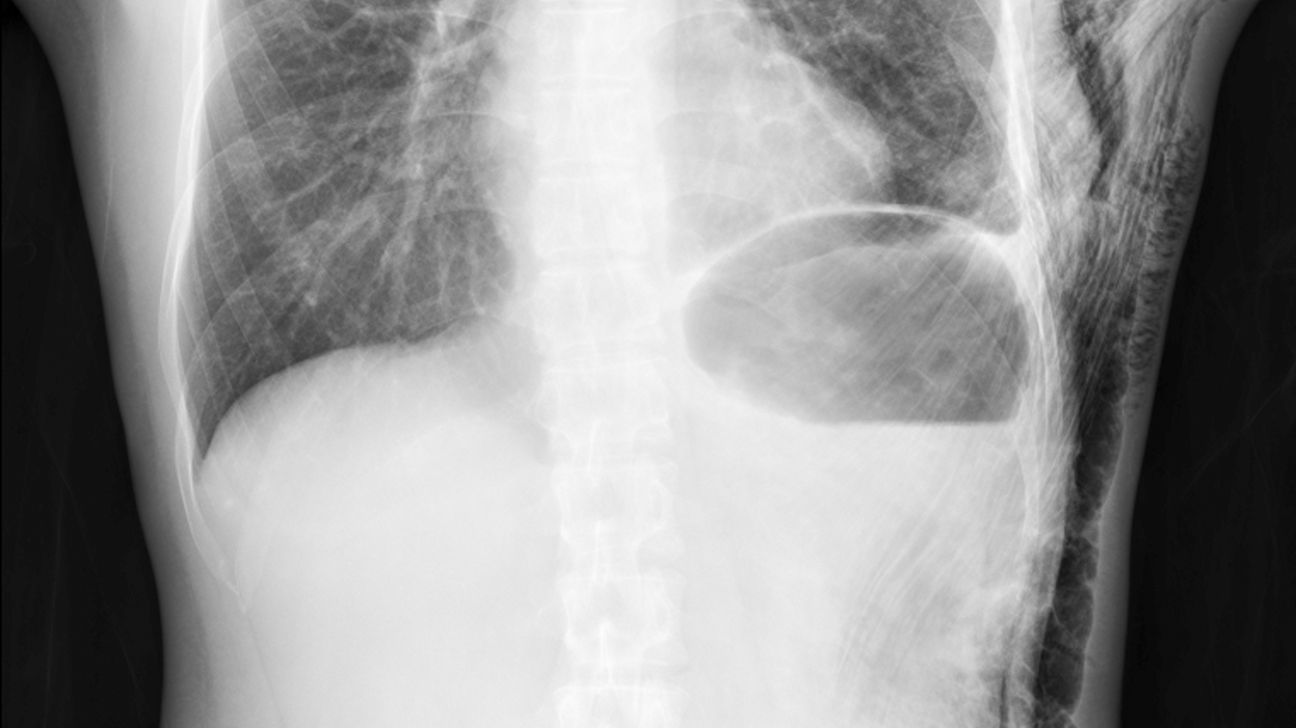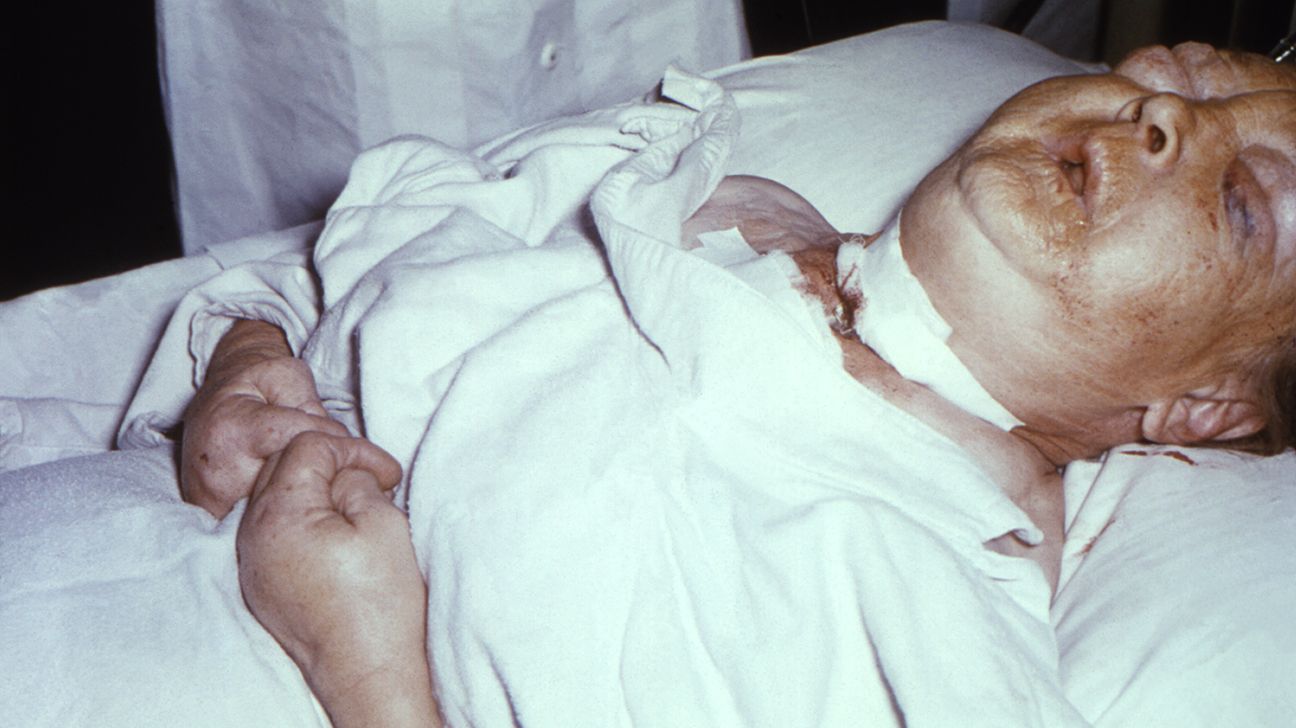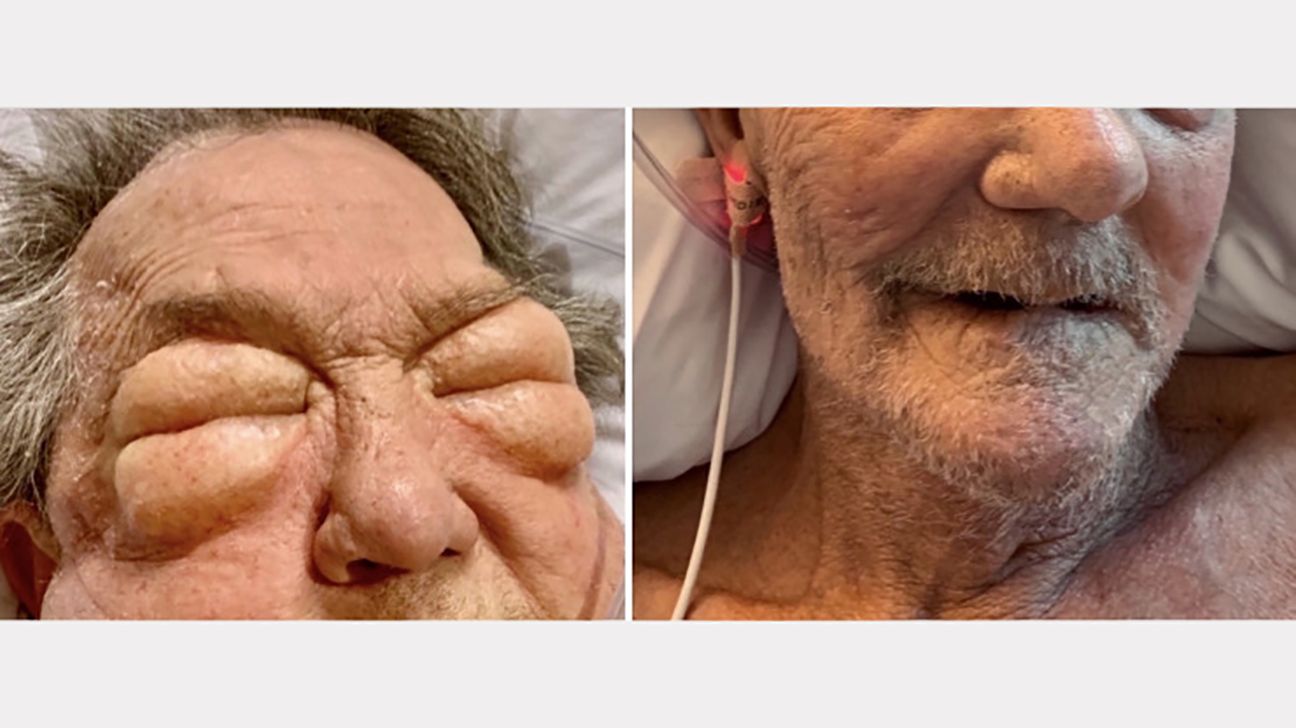Subcutaneous emphysema is the medical term for air becoming trapped in tissues beneath the skin. It is rare, but may occur as a result of trauma, injury, infection, or certain medical procedures.
Doctors sometimes refer to subcutaneous emphysema as crepitus, tissue emphysema, or subcutaneous air. The condition may be visible if it leads to bulging beneath the skin. It most often affects the skin of the neck or chest but can occur elsewhere.
The skin has an outer layer called the epidermis and an inner layer called the dermis. Beneath the dermis is a layer of subcutaneous tissue that mainly consists of fat and connective tissue.
Subcutaneous emphysema is the presence of air in the subcutaneous tissue. Possible causes include trauma, infections, injuries, and certain medical procedures.


Warning
Contains Sensitive Content


The symptoms of subcutaneous emphysema differ from those of other types of emphysema and are typically localized to the area of trapped air.
A person may notice a smooth bulge in the skin and feel a sensation of pressure in the area. If a person palpates or presses the bulge, it may create a crackling sound.
People may also experience symptoms related to the trauma or injury that caused the subcutaneous emphysema.
Subcutaneous emphysema may occur due to
- physical injury, such as to the:
- chest cavity
- sinus cavities
- facial bones
- barometric trauma, which is an injury to the body due to changes in air or water pressure
- a pulmonary bleb, which is a small collection of air between the lung and the outer surface of the lung
- bowel perforation
- infections, such as gas gangrene
- certain surgical procedures, including:
- bronchoscopy
- gastric tube placement
- arthroscopic shoulder surgery
- central venous line placement
It can also occur due to ventilator malfunction or disruption.
Subcutaneous emphysema itself often
Depending on where the air has become trapped, complications can arise. As such, people with symptoms of subcutaneous emphysema should seek immediate medical attention to determine and treat the underlying cause.
Subcutaneous emphysema is
- skin necrosis
- airway compression or closure
- respiratory compromise or failure
- pacemaker dysfunction
- cardiac arrest
Air can also move along tissues to other parts of the body and create symptoms related to pressure or swelling.
Since subcutaneous emphysema can occur as a result of serious trauma, injury, or infection, people with symptoms of this condition should seek immediate medical attention.
The treatment for subcutaneous emphysema involves identifying and treating the underlying cause. Subcutaneous emphysema is likely to resolve within
In some cases, subcutaneous emphysema will occur without any apparent underlying cause. As long as the person is not experiencing significant discomfort, the doctor may recommend a watch-and-wait approach. The body may absorb the extra air on its own over time.
There are several subtypes of emphysema, and many affect the lungs. This condition
The alveoli are responsible for exchanging oxygen and carbon dioxide, so damage to these tissues may cause breathing difficulties and other respiratory problems.
There is no cure for emphysema. However, treatments are available to help manage the symptoms.
Below are some examples of other types of emphysema.
Centrilobular emphysema
Doctors may also call centrilobular emphysema proximal acinar emphysema. It is the
Smoking may cause the damage that researchers associate with this type of emphysema.
Bullous emphysema
Bullous emphysema is a condition in which damage to the walls of the alveoli
In comparison with the alveoli, these large air pockets are less efficient in exchanging oxygen and carbon dioxide. As such, a person with bullous emphysema may experience breathing difficulties.
Bullae are larger than 1 centimeter in diameter. Doctors refer to especially large bullae as giant bullae. These are more likely to cause symptoms and require surgical treatment.
Paraseptal emphysema
Paraseptal emphysema is also called distal acinar emphysema. It typically occurs in the upper lobes of the lungs. This type of emphysema can develop into bullous emphysema.
Research associates paraseptal emphysema with damage due to smoking. Therefore, quitting smoking may be an important part of the treatment for this condition.
Subcutaneous emphysema itself is
However, complications can sometimes occur. In some cases, the trapped air can compromise the subcutaneous tissue. When this happens, surgery may be necessary to remove the air.
In some cases, subcutaneous emphysema may indicate a more serious injury or illness that requires rapid intervention.
Subcutaneous emphysema is a type of emphysema involving air trapped beneath the skin. It is usually a benign condition. However, it can sometimes occur as a result of severe trauma or an injury or infection that requires prompt treatment.
In those with subcutaneous emphysema, the body will typically absorb any trapped air over time. However, depending on the location of the trapped air, a doctor may need to perform surgery to release it.
Unlike other types of emphysema, subcutaneous emphysema does not primarily affect the lungs. Most instances of subcutaneous emphysema affect the skin on the neck or chest, though the condition can also occur elsewhere on the body.


